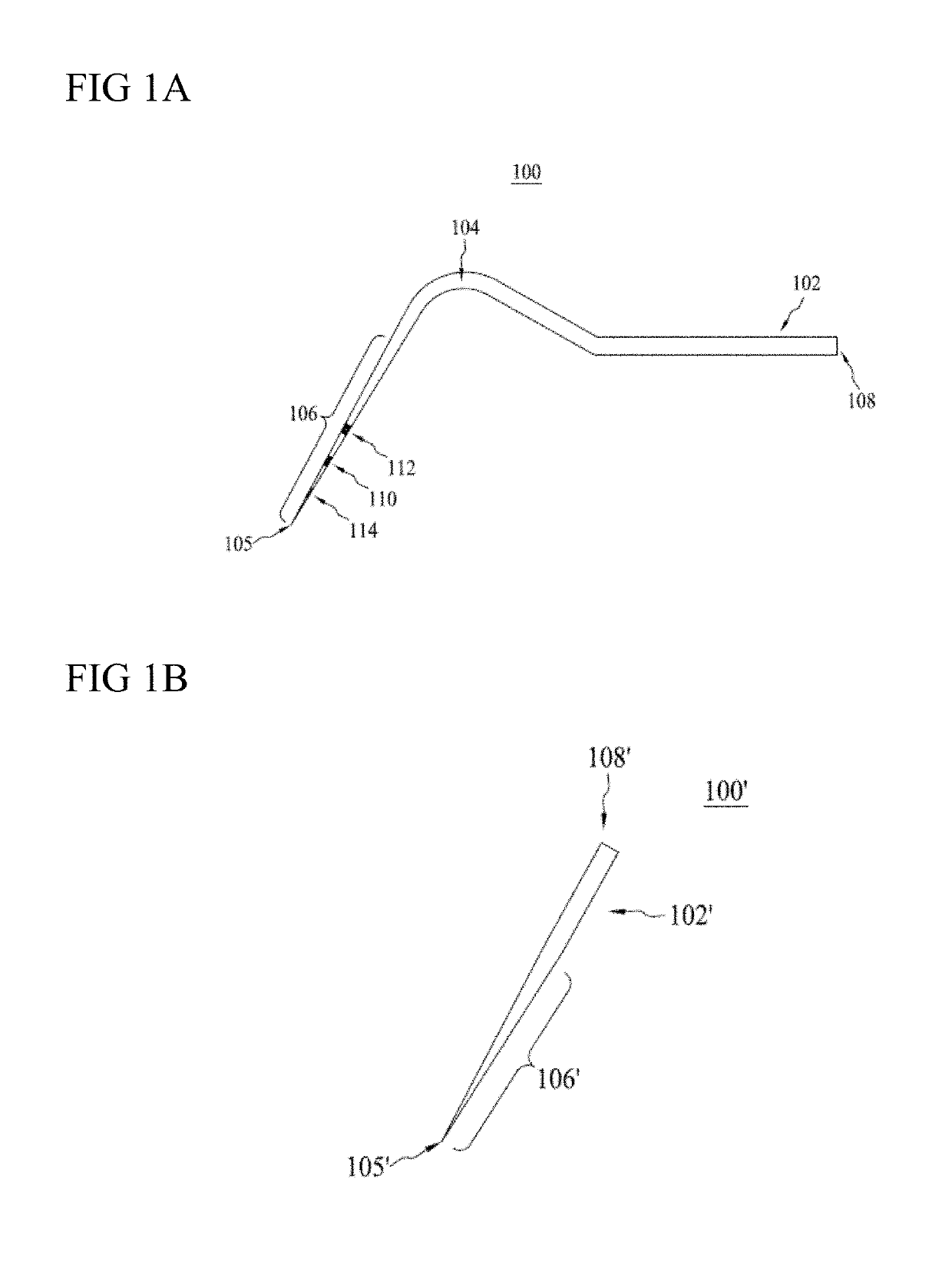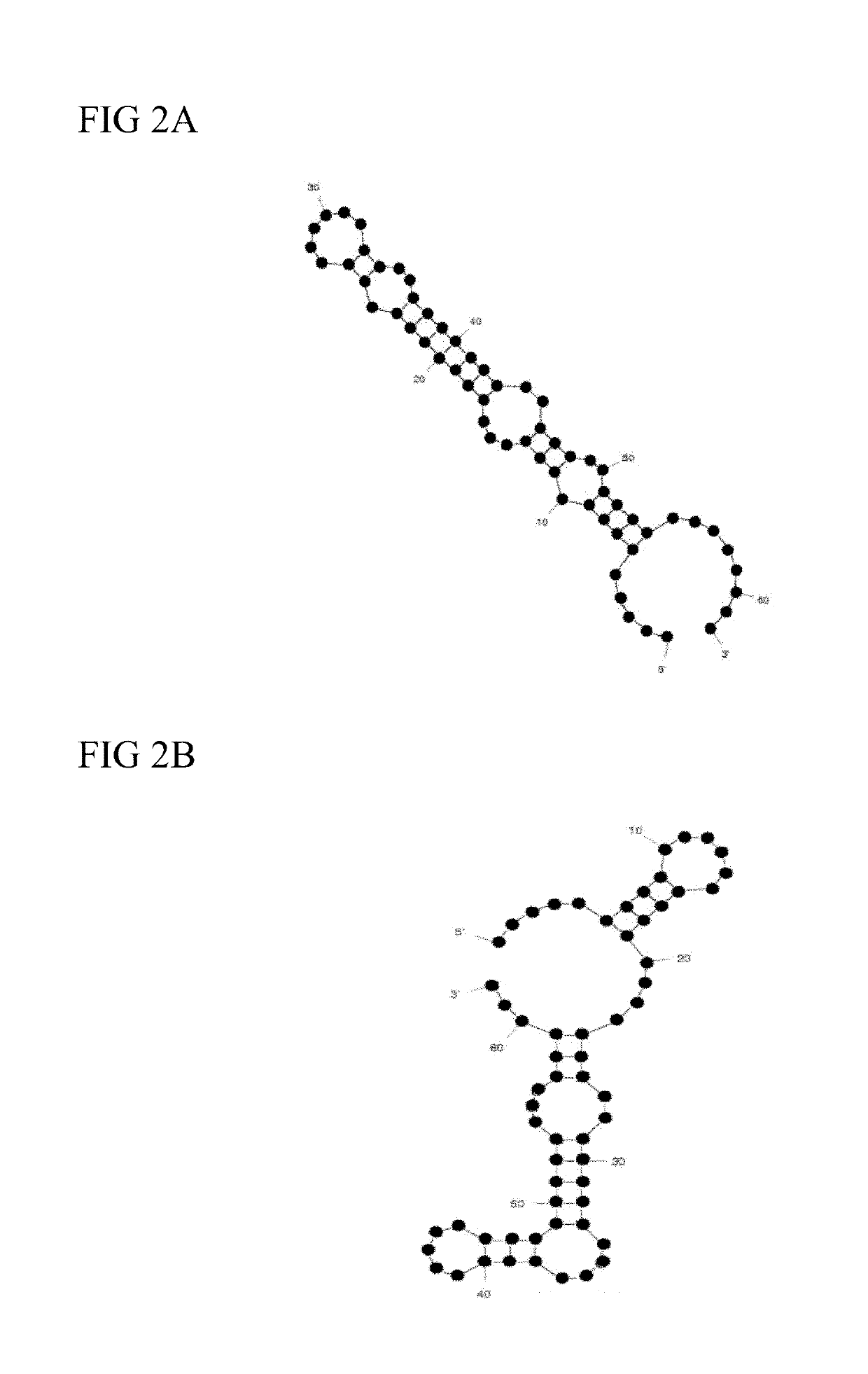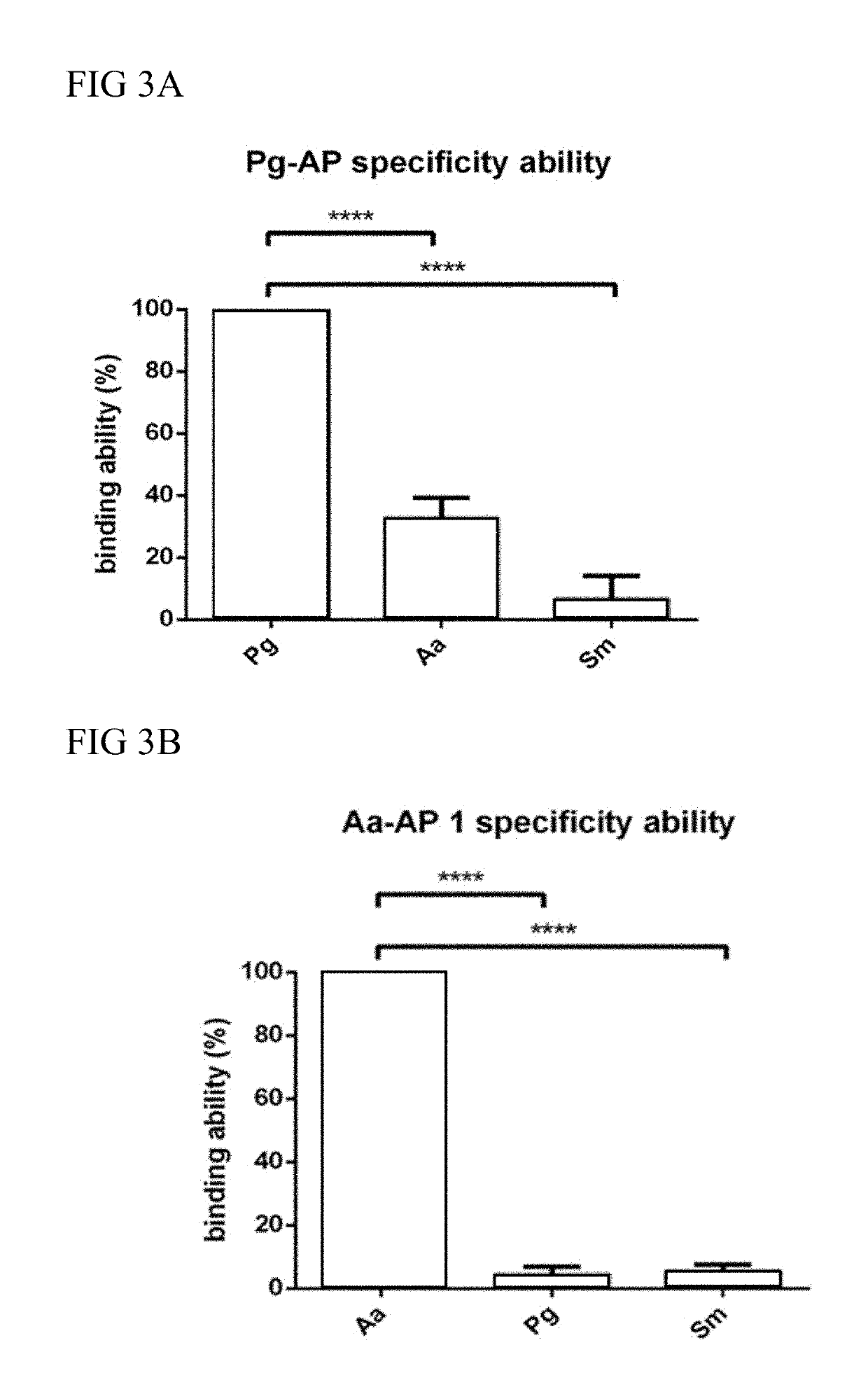Aptamers of surface proteins of periodontal pathogens and uses thereof
- Summary
- Abstract
- Description
- Claims
- Application Information
AI Technical Summary
Benefits of technology
Problems solved by technology
Method used
Image
Examples
example 1
Determining the Binding Affinity and Specificity of the Present Aptamer to Periodontal Pathogens
[0118]In this example, the binding affinity and specificity of the selected aptamers to periodontal pathogens were determined in accordance with procedures described in the “Materials and Methods” section. Results are provided in FIG. 3.
[0119]As illustrated in FIG. 3, the selected aptamer having SEQ ID NO: 5 exhibited higher binding specificity toward P. gingivalis (Pg) (Kd=4.592 nM) than to A. actiomycetemcomitans (Aa) or S. mitis (Sm) (FIG. 3A); whereas the selected aptamer having SEQ ID NO: 6 was more specificity toward A. actiomycetemcomitans (Aa) (Kd=3.503 nM) than to P. gingivalis (Pg) or S. mitis (Sm) (FIG. 3B).
Example 2 Capturing P. gingivalis and A. actiomycetemcomitans by Gold Nanoparticles Conjugated Aptamers
[0120]In this example, the selected aptamers of SEQ ID NO: 5 or 6 were first conjugated with gold nanoparticles, then were used to capture periodontal pathogens. Results ar...
example 3
Determining Cross Reactivity of the Present Aptamers Using High Sensitivity Side-Flow Detection Strips
[0122]To test cross-reactivity, high sensitivity side-flow detection strips (see FIG. 5) were respectively constructed in accordance with procedures described in “Materials and Methods” section. In one set of detection strips, the gold nanoparticles conjugated aptamer of P. gingivalis, and the streptavidin and biotinylated aptamer of P. gingivalis complex were respectively fixed thereon, then, 109 of A. actiomycetemcomitans were added to see if there were any cross-reaction. The result indicated minor cross reaction existed between the biotinylated aptamer of P. gingivalis (SEQ ID NO: 5) and A. actiomycetemcomitans. By similar manner, the strips for detecting cross-reactivity of the aptamer of A. actiomycetemcomitans (SEQ ID NO: 6) and P. gingivalis were constructed, and the results indicated that there was no cross reaction between the aptamer of A. actiomycetemcomitans (SEQ ID NO:...
example 4
Characterizing The Sensitivity of the Present Aptamers in Capturing Periodontal Pathogens
[0123]4.1 Determining the Sensitivity of the Present Aptamer of A. actiomycetemcomitans
[0124]In this example, detection strips were respectively loaded thereon with the present 3′- or 5′-biotinylated aptamer of A. actiomycetemcomitans, then various amounts of A. actiomycetemcomitans were applied onto the areas containing the aptamers.
[0125]Results indicated that the present aptamer was capable of detecting wide ranges of A. actiomycetemcomitans, i.e., from 10 to 1,000,000 A. actiomycetemcomitans; suggesting the present aptamer is highly sensitive in capturing A. actiomycetemcomitans.
[0126]4.2 Enhancing the Signal of the Present Aptamers Conjugated with Gold Nanoparticles
[0127]In this example, an amplifying agent known to enhance the signal of gold nanoparticles was first further applied onto the detection spots of Example 4.1 to amplify the detection signals. The amplifying agent was prepared ...
PUM
| Property | Measurement | Unit |
|---|---|---|
| Fraction | aaaaa | aaaaa |
Abstract
Description
Claims
Application Information
 Login to View More
Login to View More - R&D Engineer
- R&D Manager
- IP Professional
- Industry Leading Data Capabilities
- Powerful AI technology
- Patent DNA Extraction
Browse by: Latest US Patents, China's latest patents, Technical Efficacy Thesaurus, Application Domain, Technology Topic, Popular Technical Reports.
© 2024 PatSnap. All rights reserved.Legal|Privacy policy|Modern Slavery Act Transparency Statement|Sitemap|About US| Contact US: help@patsnap.com










